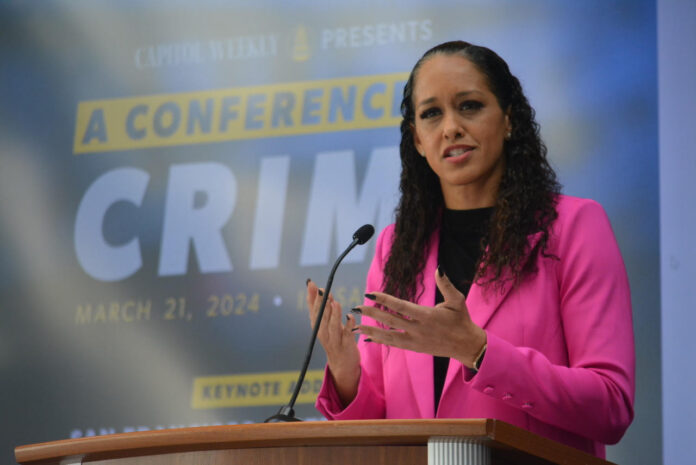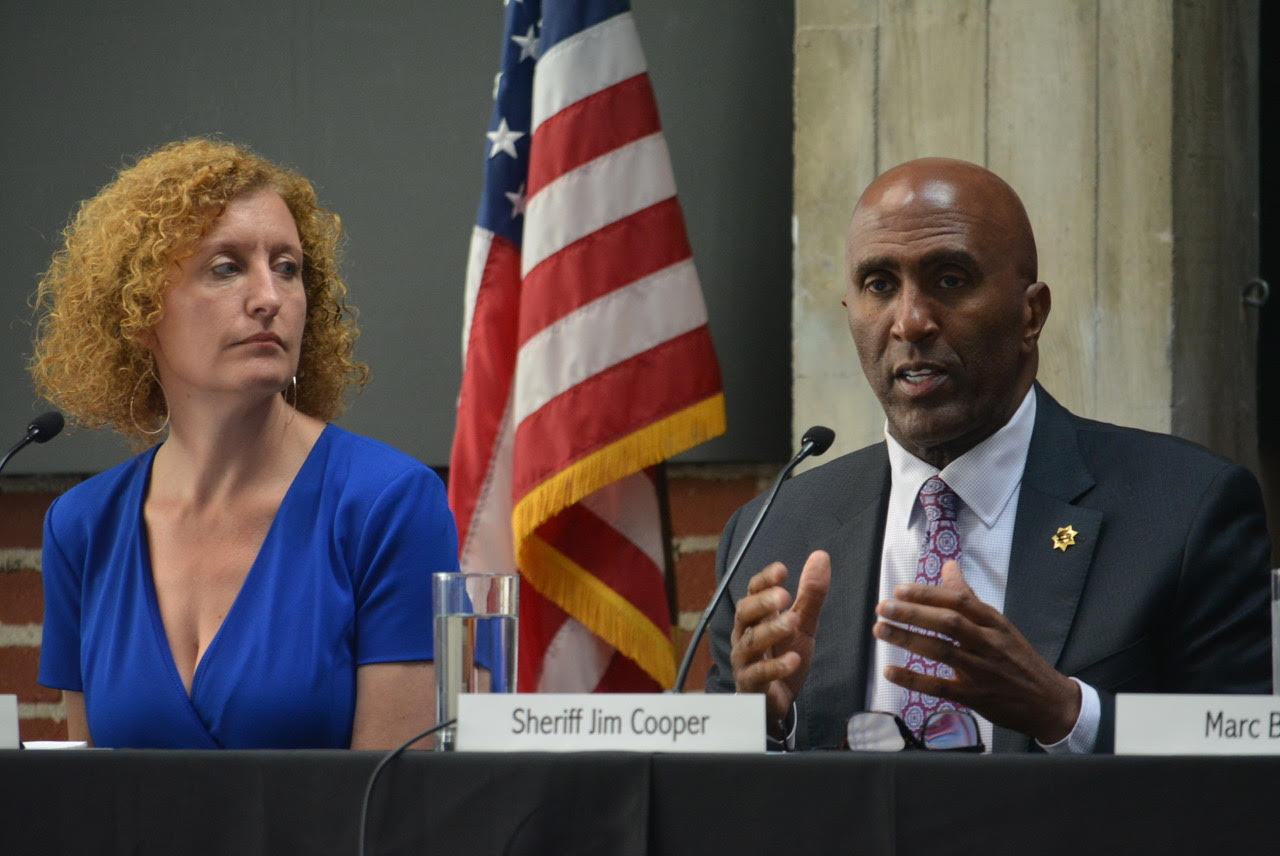
By Antonio Ray Harvey, California Black Media
On March 21, San Francisco District Attorney Brooke Jenkins shared her perspectives on Proposition 47 (Prop 47), a controversial ballot measure that has been inflaming debates and influencing law enforcement action in California. The 10-year-old proposition has significantly impacted legal proceedings related to crime and punishment in the state.
At “A Conference on Crime,” a daylong event hosted by Capitol Weekly, Jenkins said Prop 47 started as a proactive way of reducing penalties for certain crimes. However, she added, it has evolved from a “pure” and “noble” effort into a “revolving door” for many individuals charged with low-level crimes.
“I think what we’ve seen are a few unintended consequences particularly when it comes to retail theft,” said Jenkins, the keynote speaker at the event, held at the California Endowment Conference Center near the State Capitol. “But I don’t want to blame it on Prop 47 alone. I think there are a number of factors that played into what came after Prop 47.”
Organizers say the conference focused on the most challenging law enforcement issues facing California today: organized retail theft, the lethal fentanyl crisis, and the growing debate on whether or not to amend Prop 47.
Prop 47 was passed by California voters on Nov. 5, 2014. The initiative reclassified some non-violent property crimes from felonies to misdemeanors, where the value of item involved does not exceed $950. In addition, Prop 47 converted some drug possession offenses into misdemeanors.
Retail thefts that exceed the $950 threshold are defined as commercial burglaries, a crime that can be charged as either a misdemeanor or a felony. On Jan. 4, the Public Policy Institute of California (PPIC) released a report revealing that robberies of commercial businesses were up in 9 of the 15 largest counties in the state in 2022 compared to 2019.
The state’s most populous county, Los Angeles, experienced the highest commercial robbery rate in 2022, followed by San Joaquin, Sacramento, and Kern.
“We now have watered it down to the point that misdemeanor charges are basically legalized when it comes to retail theft. There’s just not much we can do,” Jenkins told California Black Media. “So, from my vantage point, again, unintended consequences. I think there are just some adjustments that have to be made in order to get us to a point where we have something that incentivizes people to engage in the change they need for their lives.”
Sharp increases in fentanyl use and the growing frequency of retail thefts were other concerns discussed in depth at the conference. Fentanyl has been linked to thousands of opioid-related deaths across the state over the last three years and images of individuals wearing masks brazenly storming retail stores in smash-and-grab heists continue to haunt business owners, leading to store closures up and down the state.
Panelists participating in the discussion on Prop 47 included Assemblymember Kevin McCarty (D-Sacramento), Marc Beaart from the Los Angeles District Attorney’s Office Organized Crime Division, Sacramento County Sheriff Jim Cooper, and Lenore Anderson from the Alliance for Safety and Justice.
Anderson was the campaign chair and co-author of Prop 47, explained that the proposition was designed to minimize incarceration and reallocate prison funding to reform efforts involving mental health and drug treatment, kindergarten to 12th grade education, and victim programs.
Anderson, an attorney, told attendees that Prop 47 has been “overwhelmingly successful” since it became law 10 years ago, adding that it has helped to alleviate prison overcrowding.
“That’s a huge victory,” Anderson said.
Cooper, a law enforcement agent with over 30 years of experience and a former member of the state Assembly, said shoplifting and low-level crimes are “directly related to Prop 47.”
“If Prop 47 is working so well, why do we have over 20 bills introduced this year in the legislature to deal with Prop 47 issues?” Cooper asked. “The proponent says, ‘Hey, crime is down.’ It’s not down (because) it’s underreported.”

Beeart is the Bureau Director for L.A. County’s Fraud and Corruption Prosecutions. His office files conspiracy, receiving stolen property, and smash-and-grab robbery charges against violators. The bureau also focuses on prosecuting “ring leaders” of mob-style retail theft. Beaart said the $950 misdemeanor limit established by Prop 47 “is a red herring for the public,” suggesting that it is misleading to focus on it as causal.
“In L.A. County we’ve decided to allocate our resources in the most efficient way possible,” Beaart said. “We do not prosecute low-level drug offenses. We use our resources for higher and better prosecution that have an impact on the community.”
Overall, PPIC analysis of crime data indicates that retailers are the main targets of crime in various parts of California. Shoplifting incidents rose in the Bay Area, Los Angeles and other urban areas. Commercial burglary and robbery are also more prevalent across the state, according to PPIC.
By 2022, commercial burglary was up in 21 of California’s 58 counties primarily in large urban counties. Commercial robberies rose in 25 counties.
“Right now, we have a system where it’s a revolving door for many of these folks,” Jenkins said. “They just come with a new case. Some of them 20 times and there’s nothing we have to sort of usher them in a different direction.”




